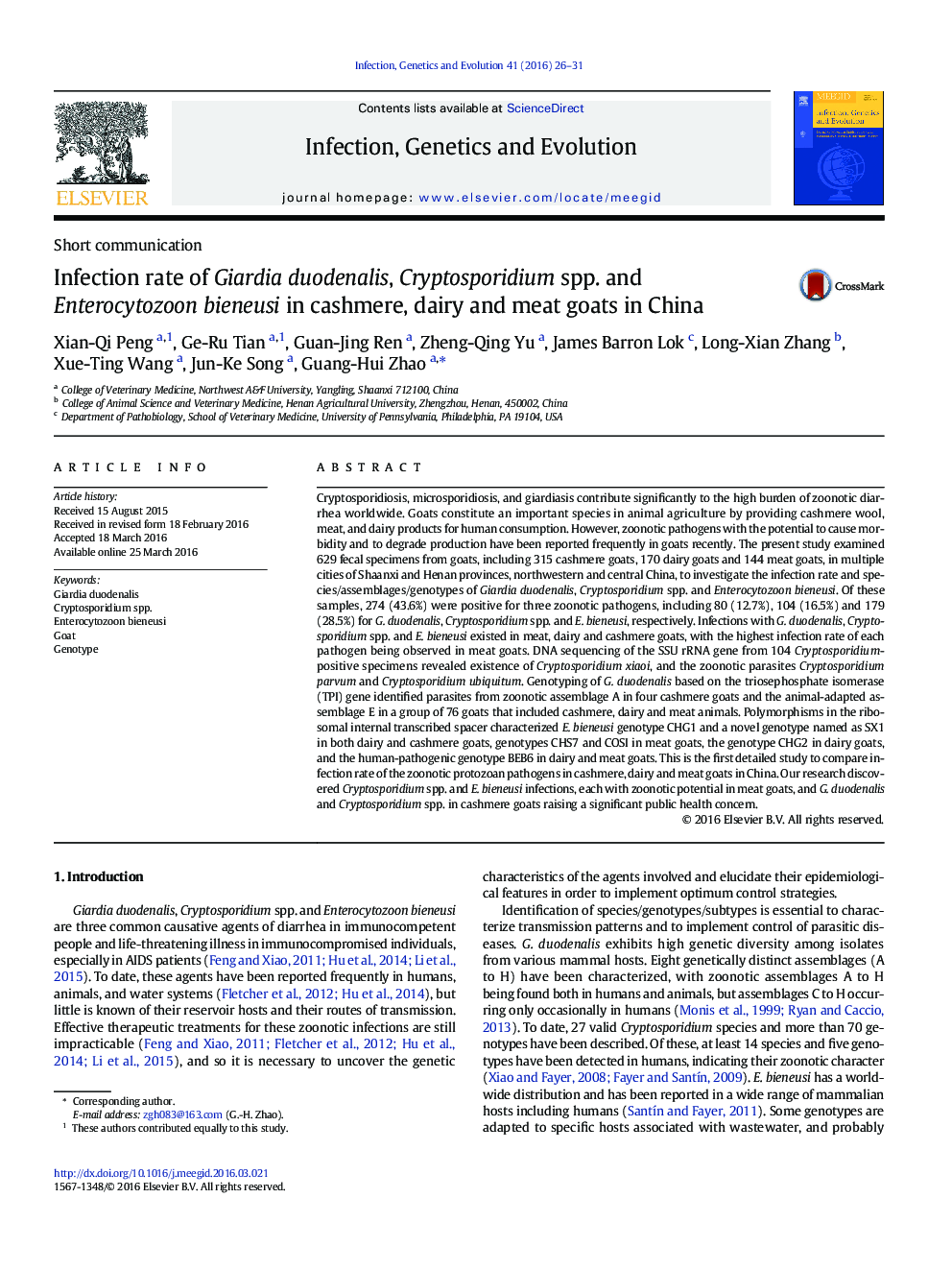| کد مقاله | کد نشریه | سال انتشار | مقاله انگلیسی | نسخه تمام متن |
|---|---|---|---|---|
| 2822921 | 1570162 | 2016 | 6 صفحه PDF | دانلود رایگان |

• This is the first detail report to compare the infection status of goats for three production categories in China.
• Infections of three pathogen existed in meat, dairy and cashmere goats.
• Different infection status of three pathogen were observed in goats for three production categories.
Cryptosporidiosis, microsporidiosis, and giardiasis contribute significantly to the high burden of zoonotic diarrhea worldwide. Goats constitute an important species in animal agriculture by providing cashmere wool, meat, and dairy products for human consumption. However, zoonotic pathogens with the potential to cause morbidity and to degrade production have been reported frequently in goats recently. The present study examined 629 fecal specimens from goats, including 315 cashmere goats, 170 dairy goats and 144 meat goats, in multiple cities of Shaanxi and Henan provinces, northwestern and central China, to investigate the infection rate and species/assemblages/genotypes of Giardia duodenalis, Cryptosporidium spp. and Enterocytozoon bieneusi. Of these samples, 274 (43.6%) were positive for three zoonotic pathogens, including 80 (12.7%), 104 (16.5%) and 179 (28.5%) for G. duodenalis, Cryptosporidium spp. and E. bieneusi, respectively. Infections with G. duodenalis, Cryptosporidium spp. and E. bieneusi existed in meat, dairy and cashmere goats, with the highest infection rate of each pathogen being observed in meat goats. DNA sequencing of the SSU rRNA gene from 104 Cryptosporidium-positive specimens revealed existence of Cryptosporidium xiaoi, and the zoonotic parasites Cryptosporidium parvum and Cryptosporidium ubiquitum. Genotyping of G. duodenalis based on the triosephosphate isomerase (TPI) gene identified parasites from zoonotic assemblage A in four cashmere goats and the animal-adapted assemblage E in a group of 76 goats that included cashmere, dairy and meat animals. Polymorphisms in the ribosomal internal transcribed spacer characterized E. bieneusi genotype CHG1 and a novel genotype named as SX1 in both dairy and cashmere goats, genotypes CHS7 and COSI in meat goats, the genotype CHG2 in dairy goats, and the human-pathogenic genotype BEB6 in dairy and meat goats. This is the first detailed study to compare infection rate of the zoonotic protozoan pathogens in cashmere, dairy and meat goats in China. Our research discovered Cryptosporidium spp. and E. bieneusi infections, each with zoonotic potential in meat goats, and G. duodenalis and Cryptosporidium spp. in cashmere goats raising a significant public health concern.
Figure optionsDownload as PowerPoint slide
Journal: Infection, Genetics and Evolution - Volume 41, July 2016, Pages 26–31